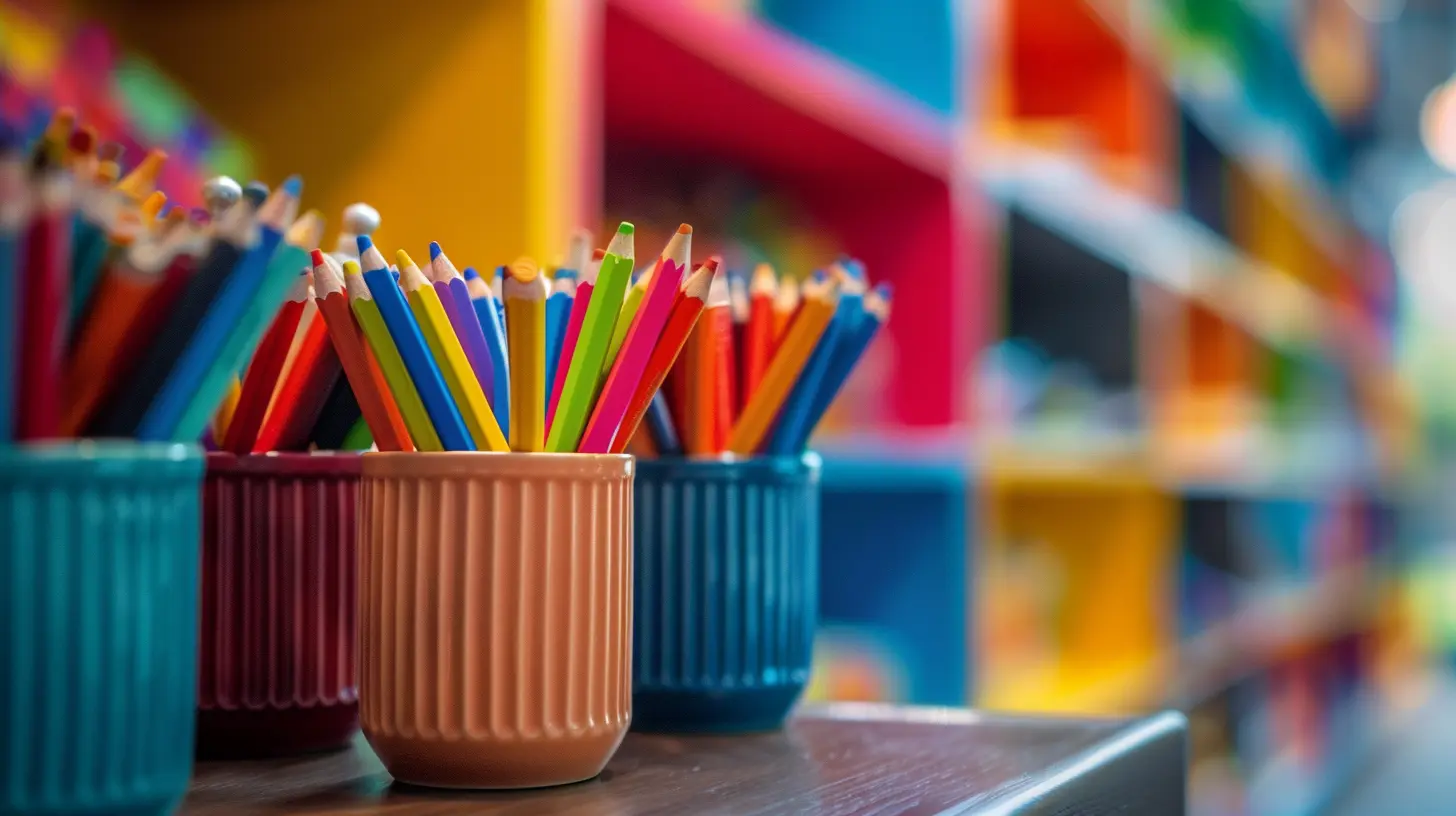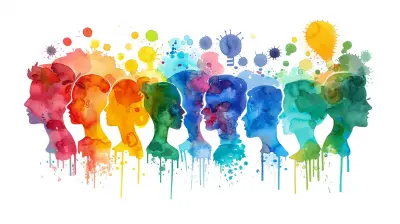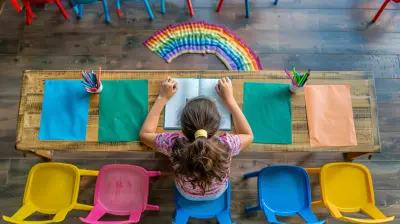Customizing Curriculum for Special Education Needs
10 May 2025
Education isn’t a one-size-fits-all deal. If it were, we'd all be sitting in classrooms shaped like cookie cutters, wearing identical glasses, and solving the same math problems at the same speed. But in the real world, students have unique learning needs—especially those requiring special education.
So, how do we ensure that these students receive the education they deserve? By customizing the curriculum! Think of it like tailoring a suit: you wouldn’t expect a child to fit into an adult-sized blazer, right? The same logic applies to education.
Let’s dive into the why, the how, and the magic that happens when we craft a curriculum that suits every learner perfectly. 
Why Customization is a Game-Changer
Imagine trying to learn a new skill—like playing the guitar—only to be handed a violin. Close, but not quite right. That’s what standardized curriculum feels like for many students with special education needs (SEN).Customizing a curriculum ensures that students get the right tools, instructions, and pace to succeed. It bridges gaps, enhances strengths, and builds confidence in learners who might struggle in a traditional classroom setting.
The goal? To make learning accessible, engaging, and, dare I say, fun! 
Understanding Special Education Needs
Before we jump into how to tailor a curriculum, let’s talk about the diverse spectrum of special education needs. Students may face challenges in areas such as:- Cognitive Impairments – Learning disabilities like dyslexia, dyscalculia, or intellectual disabilities.
- Physical Disabilities – Mobility impairments or health conditions that affect classroom interactions.
- Sensory Processing Disorders – Challenges in processing sensory information like sounds, textures, or lights.
- Behavioral and Emotional Disorders – ADHD, autism spectrum disorder (ASD), or anxiety disorders impacting classroom behavior.
Each of these requires a unique approach to learning, which is why a one-size-fits-all method just doesn’t cut it. 
Key Elements of a Customized Curriculum
So, how do we tweak, twist, and tailor an educational plan to suit each child perfectly?1. Personalized Learning Goals
Not every child needs to reach the same finish line at the same time. Setting individualized education goals allows students to progress at a comfortable pace.For example, while one student might be working on improving reading skills, another might need extra support mastering math. By creating tailored goals, students experience success without feeling overwhelmed.
2. Multi-Sensory Teaching Techniques
Some students learn best by seeing, some by hearing, and others by doing. The trick is to mix it up!- Visual Learners thrive with pictures, charts, and videos.
- Auditory Learners benefit from storytelling, songs, and discussion.
- Kinesthetic Learners need hands-on activities—think building blocks or interactive games.
A customized curriculum taps into these different learning styles, making lessons engaging and effective.
3. Flexible Teaching Methods
Rigid teaching methods are like old cassette tapes—outdated and prone to failure. Instead, we need flexibility! Some students might struggle with traditional textbooks but soar with audiobooks or gamified learning tools.Simple tweaks like adjusting lesson formats, using assistive technology, or incorporating movement breaks can make a world of difference.
4. Assistive Technology & Tools
Who says technology is just for scrolling through social media? In special education, tech can be a lifesaver.- Speech-to-text software for students with writing difficulties.
- Audiobooks & screen readers for visually impaired learners.
- Educational apps that break down complex concepts into fun activities.
The right tools can unlock limitless learning potential!
5. Breaking Lessons into Bite-Sized Pieces
Trying to learn everything at once is like gulping down an entire pizza in one bite—impossible and messy. Students with SEN often benefit from chunking information into smaller, digestible parts.Instead of tackling a whole chapter in one go, breaking it into short sections with frequent check-ins boosts comprehension and reduces frustration. 
The Role of Teachers & Parents
A customized curriculum isn’t just about content—it’s about support. Teachers, parents, and even peers play a crucial role in making these adaptations effective.Teachers: The Master Storytellers
Great teachers know that teaching isn’t just about dumping knowledge—it’s about telling a story. Whether dramatizing a history lesson, using games to teach science, or incorporating real-world connections, teachers bring learning to life.Most importantly, they listen. They observe what works, tweak lesson plans, and find creative ways to engage every student.
Parents: The Ultimate Coaches
Learning doesn’t stop when the bell rings. Parents play a key role in reinforcing skills at home. Simple activities like reading together, practicing basic math through cooking, or even turning everyday tasks into learning opportunities make a difference.Peers: The Unsung Heroes
A little encouragement from friends can do wonders. Buddy systems or peer-assisted learning programs help students develop confidence while reinforcing their learning in a social setting.Overcoming Challenges in Curriculum Customization
Let’s be real—customizing a curriculum isn’t always a walk in the park. Challenges like limited resources, lack of training, and time constraints can make things tricky.However, with collaboration, creativity, and a mindset of continuous improvement, solutions emerge:
- Professional Development for Teachers – Training in SEN strategies can empower educators.
- Community Involvement – Schools collaborating with organizations can fund better resources.
- Technology Integration – EdTech tools help bridge learning gaps.
The bottom line? Challenges exist, but they shouldn’t be barriers to learning.
Final Thoughts
Customizing the curriculum for special education needs isn’t just about tweaking lesson plans—it’s about honoring individuality. It’s about understanding that every child has potential, and with the right approach, they can shine.Sure, it takes effort, patience, and a sprinkle of creativity, but the rewards? Absolutely worth it.
So, whether you’re a teacher, parent, or advocate, remember: education should fit the child, not the other way around. Because when we get it right, the possibilities are endless.
all images in this post were generated using AI tools
Category:
Curriculum DesignAuthor:

Olivia Chapman
Discussion
rate this article
6 comments
Max Vasquez
Customizing curriculum for special education needs is essential for fostering inclusive learning environments, ensuring that all students receive tailored support to thrive academically and socially.
May 21, 2025 at 1:04 PM

Olivia Chapman
Thank you for your insightful comment! I completely agree that customized curricula are vital for creating inclusive environments that support the diverse needs of all students.
Zoey Bailey
Customizing curriculum for special education is essential for fostering inclusive learning. Tailoring lessons to individual needs enhances engagement and empowers students to reach their full potential.
May 21, 2025 at 5:01 AM

Olivia Chapman
Thank you for your thoughtful comment! I completely agree that tailoring curriculum is vital for creating an inclusive environment that truly supports each student's unique needs.
Starla McCray
Thank you for shedding light on this important topic. Customizing curriculum is crucial for supporting diverse learners and fostering an inclusive educational environment. Great insights!
May 19, 2025 at 12:50 PM

Olivia Chapman
Thank you for your thoughtful comment! I'm glad you found the insights valuable.
Maxine Baxter
Essential approach for inclusive education success.
May 15, 2025 at 1:02 PM

Olivia Chapman
Thank you! Customizing the curriculum is crucial for meeting diverse learning needs and fostering an inclusive environment.
Katalina Alexander
Great article! Customizing the curriculum for special education needs is so important. It truly makes a difference in how students engage and thrive. Every learner is unique, and with the right approach, we can create an inclusive environment where everyone has the chance to shine! Keep up the fantastic work!
May 13, 2025 at 12:47 PM

Olivia Chapman
Thank you for your thoughtful feedback! I completely agree that an inclusive, tailored approach is essential for supporting every learner's unique journey.
Faelan McGrady
Tailoring curriculum for special education enhances engagement and learning outcomes, fostering inclusivity and empowering every student.
May 12, 2025 at 2:26 AM

Olivia Chapman
Thank you for highlighting the importance of tailored curricula! Inclusivity is key to empowering all students and enhancing their learning experiences.




